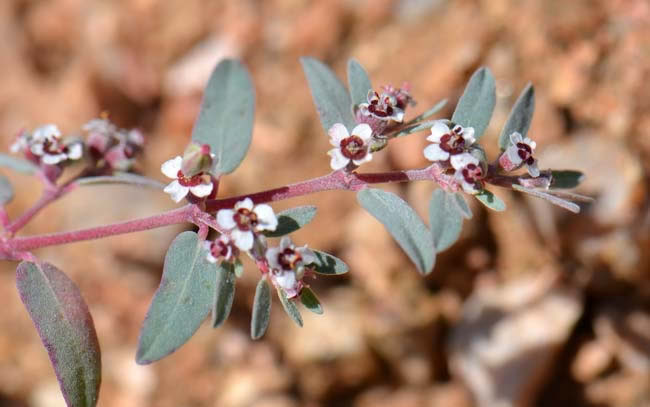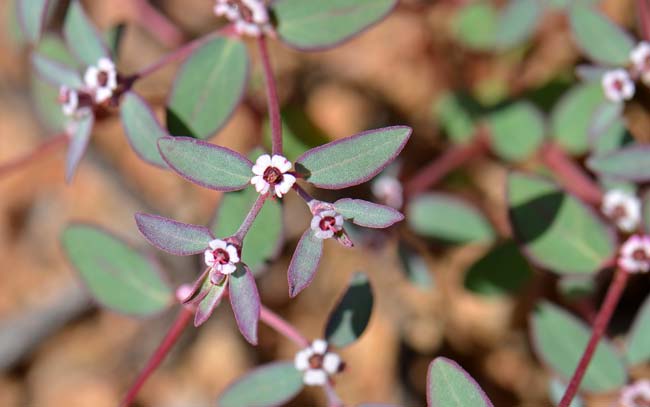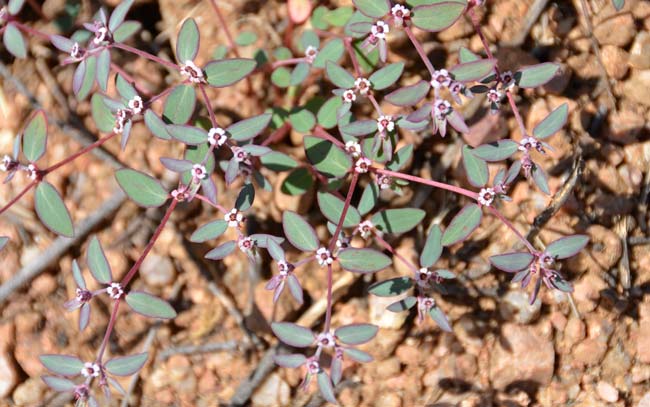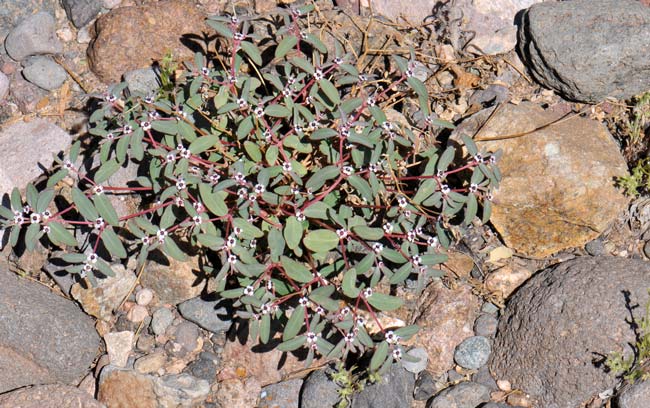Chamaesyce pediculifera, Carrizo Mountain Sandmat




Scientific Name: Chamaesyce pediculifera
Common Name: Carrizo Mountain Sandmat
Also Called: Louse Spurge, Spurge; (Spanish: Golondrina)
Family: Euphorbiaceae, Spurge or Euphorbia Family
Synonyms: (Chamaesyce pediculifera, Euphorbia pediculifera var. abramsiana, Euphorbia pediculifera var. linearifolia, Euphorbia pediculifera var. pediculifera, Euphorbia pediculifera var. typica)
Status: Native
Duration: Perennial
Size: Low-growing up to 8 inches or so.
Growth Form: Forb/herb; low-growing or typically erect, pubescent (becoming glabrous).
Leaves: Green or grayish-green from pubescence; opposite, leaf simple, margins entire, leaf blade shape variable but typically narrowly oblong, ovate, short petiole, pubescent.
Flower Color: White; petaloid unequal appendages, some appendages wider than glands, glands red or purple, inflorescence resembles a "flower", "flower" is a cyathium, solitary flowers in leaf axils, flora involucre small, bell-shaped, one female flower surrounded by many male flowers, flowers pubescent, fruit an ovoid pubescent capsule.
Flowering Season: January through December. (short season in California – January to April)
Elevation: 500 to 4,000 feet; found under 500 feet in California.
Habitat Preferences: Dry rocky slopes and rocky areas mostly in the Sonoran Desert.
Recorded Range: Chamaesyce pediculifera is rare in the United States where it is found in southern California and Arizona. It is also native throughout Baja California and northwest Mexico. In Arizona, Carrizo Mountain Sandmat is found in central and most of the southern parts of the state.
North America & US County Distribution Map for Chamaesyce pediculifera.
U.S. Weed Information: No information available.
Invasive/Noxious Weed Information: No information available.
Wetland Indicator: No information available.
Threatened/Endangered Information: No information available.
Comments: Throughout its geographic range, Carrizo Mountain Sandmat may be tricky to distinguish from Chamaesyce melanadenia which involves a look at the seeds to identify. However, at least at lower elevations, Carrizo Mountain Sandmat stands out with its semi-erect growth-form, purplish color and narrowly oblong leaves. This species may be common where found locally, uncommon in California.
In Southwest Desert Flora also see: Chiricahua Mountain Sandmat, Chamaesyce florida, Whitemargin Sandmat, Chamaesyce albomarginata; Arizona Sandmat, Chamaesyce arizonica; Head Sandmat, Chamaesyce capitellata; Royal Sandmat, Chamaesyce dioica; Hyssopleaf Sandmat, Chamaesyce hyssopifolia; Red-gland Sandmat, Chamaesyce melanadenia; Threadstem Sandmat, Chamaesyce revoluta and Yuma Sandmat, Chamaesyce setiloba.

